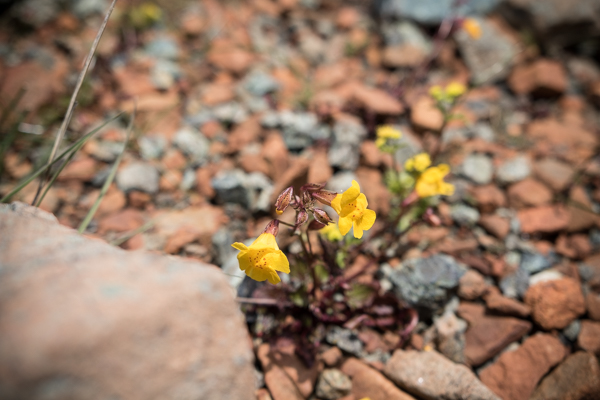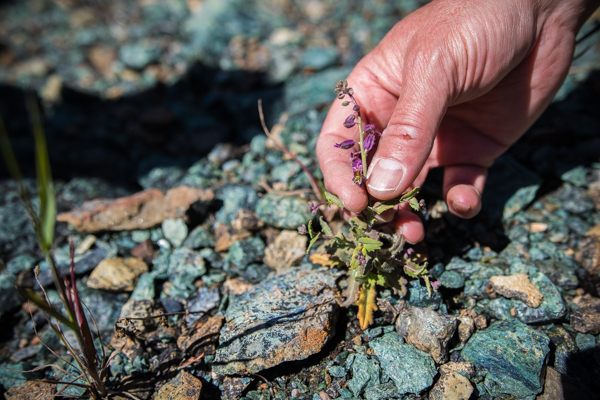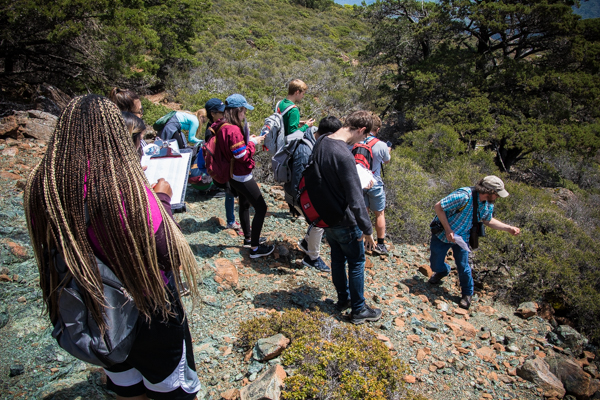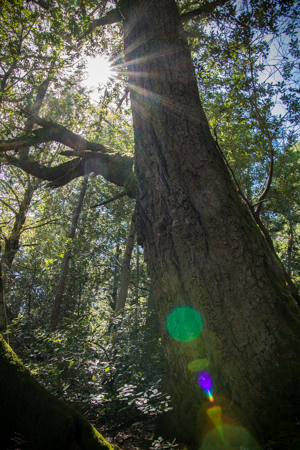Date: 4/14/2017
Location: Mt. Tamalpais State Park (Coordinates: 37.8890° N, 122.6108° W – Elevation: varies, ~1800-2500 ft)
Site Description:
Mt. Tamalpais is a mountain situated in Marin Headlands, where it acts as the highest peak in the surrounding area. It is surrounded by deep canyons, and sweeping hillsides. It is surrounded by redwoods, oaks, and chaparral. Near the top of Mt. Tam you get a gorgeous view of San Francisco and the surrounding bay.
Mt. Tam is expansive over a large area – so to specify where our excursion took place exactly, we visited a few areas that extremely serpentine in nature and were host to quite a few unique California species. Some of these species were even endemic to not just California, but Mt. Tam itself! It was easy to tell that these areas were beset by harsh conditions of harsh sunlight and lack of water and nutrients. Yet, it is truly remarkable that some of the plant species we encountered were able to live in the areas we visited.
Species Description:
1) Mimulus guttatus (Family: Phyrmaceae), going by its common-name “Yellow monkeyflower”, is a herbaceous wildflower. It is an extremely variable plant, and is also known as a model organism used for evolution and ecology studies. It has tubular shaped flowers, with the stem being erect. Leaves are opposite, and round to oval. Its bright showy flowers are found on a raceme inflorescence, with 5 or more flowers.
2) Cirsium occidentale (Family: Asteraceae), going by the common-name “Western Thistle”, is a fairly dangerous looking fellow – it is fairly widespread across California. Its leaves are a dull gray, and are fairly pubescent. Its infloresence has several flower heads, which has a fairly spherical shape with spines sticking out. When we stumbled upon it, it was host to some insects – which may be an example of some form of symbiosis which we’ve not yet encountered yet.
3) Stepthanthus glandulosus pulchellus (Family: Brassicaceae), going by its common-name “Mt. Tamalpais jewel flower”, is a flower that I became painfully intimate with – with accidentally stepping on it during the trip. It is an annual herb, which amazingly, is endemic only to the Mt. Tamalpais region (hence, it’s name). Also remarkable – it is able to thrive in the harsh conditions of serpentine soils around Mt. Tamalpais – though these plants were not found in abundance and are said to be quite rare. Anywho – with these plants being as rare as they are, I was dismayed to to realize that I was stepping on one them. Needless to say – Dr. Paul and the rest of the class have (jokingly) berated me for it.
Excursion Narrative:
We started off our trip on a bright-note with us taking a class group photo with a majestic background of the California coast! From then on, we visited our first site which was an EXTREMELY serpentine area (it just screamed serpentine from a distant – it was very green) that was host to a variety of species we were quite familiar with. It was interesting attempting to navigate through the tight and rocky trails – I myself was very glad to have brought the proper footwear.
After the first leg of the trip, we got into the vans and drove to a different part of Mt. Tamalpais that was much more easier to navigate. We were introduce to more species – and also taught to recognize some of the sounds of the birds that lived around Mt. Tam – thanks to Dr. Paul’s expertise. Finally, before heading back to the city, we got back into our cars and visited one final site – not to look at photos, but to witness the majestic views from atop of Mt. Tam. It made me feel especially lucky to have the opportunity to live in the Bay.
Other Encountered Plant Species:










